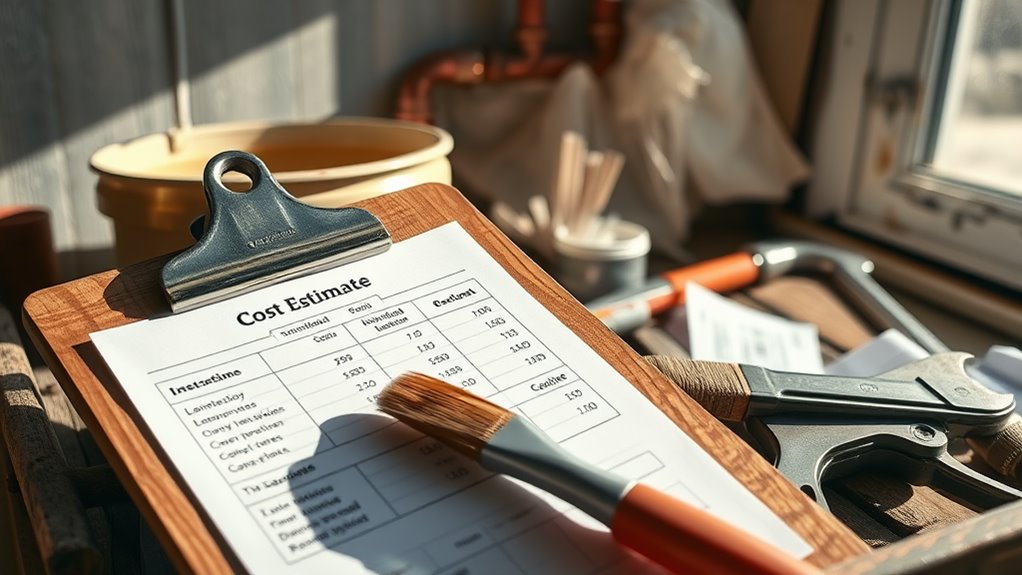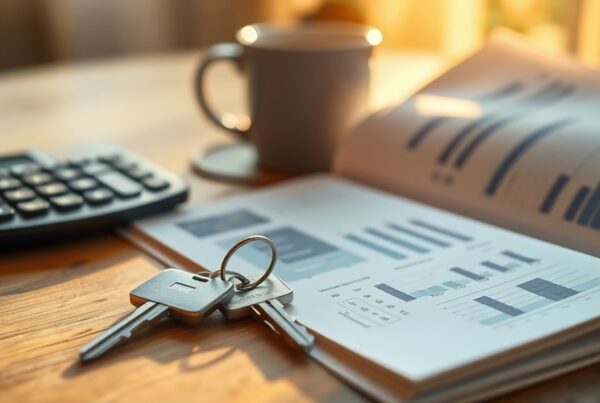Property owners often face maintenance challenges like plumbing issues ($300-$1,500), electrical problems ($150-$2,000), and roof leaks ($500-$1,500). Regular maintenance can save 10%-20% on repairs by catching issues early. Budget 1%-4% of your property’s value annually for routine upkeep and set aside 5%-10% for emergencies. Leveraging technology, like maintenance software, can cut costs by up to 30%. Discover how to streamline solutions and stay proactive for long-term savings.
Key Takeaways
- Plumbing issues cost $300-$1,500 to repair, with regular maintenance reducing expenses by 10%-20%.
- Roof leaks range from $500-$1,500 for minor repairs and over $7,000 for full replacements.
energy efficiency
- HVAC repairs cost $150-$1,500, while replacements can reach $5,000-$10,000.
- Electrical problems vary from $150-$2,000, depending on complexity and urgency.
- Budget 1%-4% of property value annually for routine maintenance and 5%-10% for emergencies.
Identifying Common Property Maintenance Challenges
While maintaining a property can be intimidating, understanding common maintenance challenges can help you address issues before they escalate. One of the most frequent property management challenges is plumbing, with repair costs ranging from $300 to $1,500. Electrical problems, such as faulty wiring or circuit issues, can also arise, costing anywhere from $150 to over $2,000. Roof leaks are another concern; minor repairs average $500 to $1,500, while full replacements can exceed $7,000. HVAC system failures are equally prevalent, with repairs costing $150 to $1,500 and replacements potentially reaching $5,000 to $10,000. Leveraging maintenance services for regular inspections can help you identify these issues early, reducing the risk of costly damage. By prioritizing regular maintenance, you can potentially save 10% to 20% on repairs by addressing problems before they worsen. Understanding these estimated costs and challenges guarantees you’re better prepared to maintain your property effectively. A comprehensive budget charting a course for property maintenance can help you allocate funds for these common issues efficiently.
Effective Solutions for Tenant Disputes
To resolve tenant disputes effectively, you should establish clear communication protocols to outline lease terms and expectations upfront. Implementing a mediation process can address conflicts swiftly, avoiding unnecessary legal action. Additionally, guarantee your property management practices adhere to legal compliance strategies to protect both landlords and tenants. Utilizing Tenant Communication Tools from property management software can enhance engagement and satisfaction during disputes.
Clear Communication Protocols
How can landlords prevent tenant disputes before they escalate? Establish clear communication protocols by setting up dedicated communication channels for tenants to report concerns. Use property management software to centralize requests, ensuring prompt tracking and resolution of maintenance issues. Document every step in a structured complaint process with transparent timelines to avoid misunderstandings. Provide tenants with an extensive guide outlining their rights and responsibilities, empowering them to raise concerns appropriately. Regularly check in with tenants through meetings or surveys to identify potential problems early. These proactive measures not only address tenant satisfaction but also reduce the likelihood of disputes escalating. By maintaining open, documented, and efficient communication, you can foster a positive landlord-tenant relationship and minimize conflicts effectively. Implementing tenant management systems can further enhance communication and streamline the resolution process.
Mediation Process Implementation
Mediation serves as a practical and cost-effective tool for resolving tenant disputes, enabling landlords and tenants to find mutually acceptable solutions without lengthy legal battles. Implementing a mediation process in property management can greatly reduce costs and foster better communication with tenants. A trained mediator facilitates open dialogue, helping both parties express concerns and collaborate on compromises. This approach often resolves disputes in hours or days, unlike litigation, which can drag on for months or years. Successful mediation improves tenant relations, reduces turnover, and encourages lease renewals. Here’s a quick comparison of mediation versus litigation:
| Aspect | Mediation | Litigation |
|---|---|---|
| Cost | $200 – $2,000 per session | $5,000 – $50,000 |
| Timeframe | Hours to days | Months to years |
| Outcome Control | Mutually agreed resolution | Court-imposed decision |
| Tenant Relationship | Strengthened | Often strained |
Legal Compliance Strategies
Building on the benefits of mediation in resolving tenant disputes, focusing on legal compliance strategies can further minimize conflicts and protect your interests. To guarantee adherence to landlord-tenant laws and foster a harmonious relationship, implement the following:
- Develop Clear Lease Agreements: Draft detailed leases that outline tenant responsibilities, rent schedules, and maintenance protocols to set expectations upfront.
- Stay Updated on Local Laws: Familiarize yourself with landlord-tenant laws to avoid legal pitfalls and guarantee fair treatment during disputes.
- Implement Structured Dispute Resolution: Establish a step-by-step process, such as mediation or arbitration, to address issues efficiently before they escalate.
Regular communication and thorough documentation of interactions also help maintain transparency. By prioritizing legal compliance strategies, you can mitigate tenant disputes while safeguarding your property and reputation. Consider the advantages of seller financing to attract buyers who may struggle with traditional financing, as it offers flexible terms and quicker sales processes.
Budgeting for Routine and Emergency Repairs
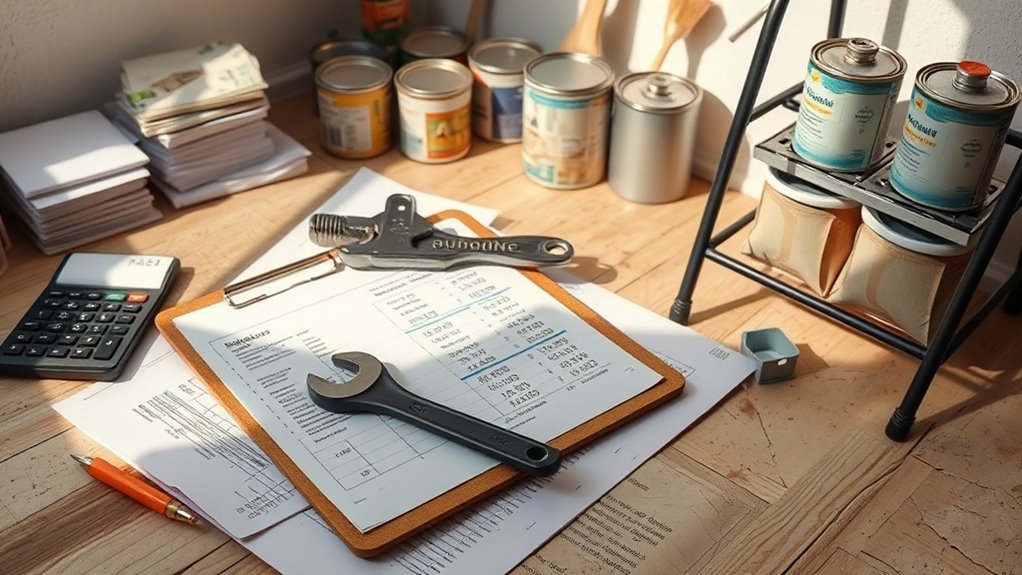
Allocate 1% to 4% of your property’s value annually for routine maintenance to manage expected costs effectively. Set aside 5% to 10% of your maintenance budget specifically for emergency repairs to handle unforeseen incidents. A well-structured maintenance schedule and regular inspections can help minimize unexpected expenses and keep your funds balanced. Utilize Google Analytics to track the effectiveness of your maintenance-related marketing efforts and identify areas for improvement.
Allocating Funds Wisely
When managing a property, budgeting 1% to 4% of its value annually for routine maintenance guarantees you’re prepared for both regular upkeep and unexpected repairs. To allocate funds wisely, analyze past Maintenance Costs to identify trends and prioritize Property Maintenance tasks. Here’s how to optimize your budgeting strategy:
- Assess historical data: Review past expenses to identify recurring costs and plan future allocations.
- Create a maintenance schedule: Distribute tasks evenly throughout the year to avoid overspending in peak periods.
- Set aside reserves: Make certain you have a buffer for unforeseen repairs without derailing your budget.
- Monitor rental income stability: Ensure consistent cash flow to support both routine and emergency maintenance needs.
Emergency Repair Planning
While managing a property, it’s vital to prepare for both routine upkeep and unexpected emergencies by separating funds for each. Property managers should allocate 1% to 4% of the property’s value annually, ensuring sufficient resources for emergency repairs. Creating a dedicated emergency fund helps cover urgent issues without disrupting routine maintenance budgets. Regular inspections and preventive maintenance reduce the frequency and severity of unexpected problems, lowering long-term costs. Identify common emergency scenarios, such as plumbing failures or electrical issues, to estimate expenses accurately. Incorporate both routine maintenance tasks and potential emergency repairs into a detailed maintenance schedule to address issues promptly and minimize damage. By prioritizing preventive maintenance and strategic budgeting, you’ll protect your property’s value and avoid financial strain when emergencies arise. Understanding real estate market trends can also help in anticipating potential increases in repair costs due to market fluctuations.
Strategies for Minimizing Vacancy Losses
Several effective strategies can help minimize vacancy losses and keep your property occupied. Start by conducting thorough market research to set competitive rental rates. This guarantees your prices align with the current market, making your property more attractive to potential tenants. High-quality listings with professional photos and compelling descriptions can also boost visibility and interest, speeding up tenant placements. Additionally, implement retention programs like lease renewal incentives or referral bonuses to encourage existing tenants to stay longer, reducing turnover and vacancy losses. Leveraging landlord software can further enhance tenant interaction and streamline rental management tasks.
Here are three actionable steps to further reduce vacancies:
- Add Value with Amenities: Offer on-site maintenance or community events to make your property more appealing.
- Proactive Communication: Follow up promptly with prospective tenants and personalize your outreach to secure leases faster.
- Optimize Listings: Use high-quality visuals and detailed descriptions to attract more interest.
Optimizing Rental Income Through Market Analysis
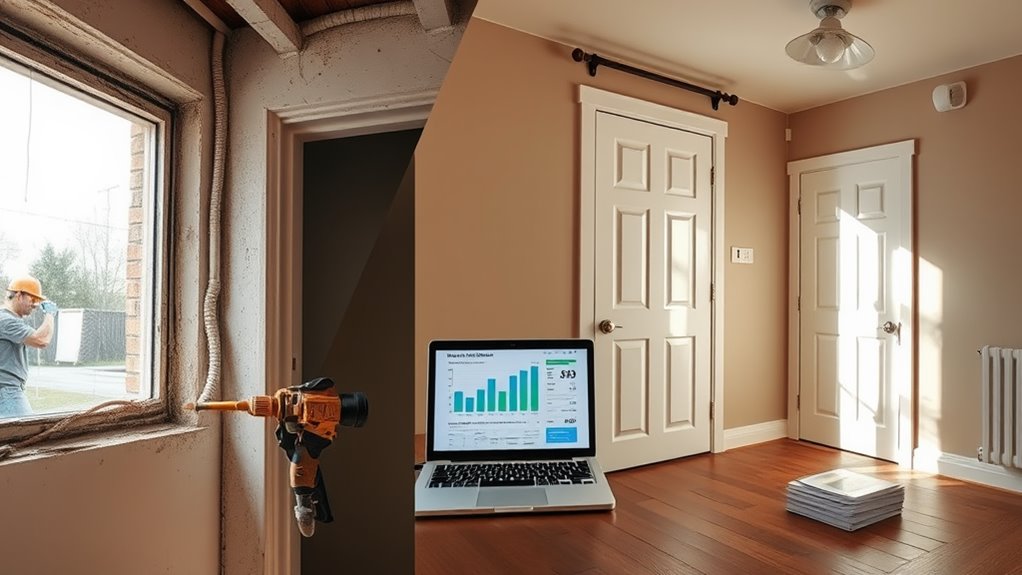
To maximize rental income, conducting a thorough market analysis is essential, as it allows you to identify competitive rental rates and align your pricing with current demand. By analyzing local trends, you can set rental pricing that attracts tenants while guaranteeing profitability. Use advanced tools like CoreLogic or Marshall & Swift for accurate property valuation, which helps determine ideal rental rates based on market values and replacement costs. Regularly update your listings with quality photos and compelling descriptions to enhance visibility and occupancy rates. Focus on tenant satisfaction by implementing retention strategies, such as appreciation programs, to encourage lease renewals and reduce turnover costs.
| Market Analysis Factors | Benefits |
|---|---|
| Local demand & supply | Align pricing with market conditions |
| Geographic location | Attract target tenants |
| Property type | Set competitive rates |
| Replacement costs | Guarantee accurate valuation |
| Tenant retention programs | Improve satisfaction & stability |
Legal Fees and Compliance Costs in Property Management
Understanding legal fees and compliance costs guarantees effective property management and minimizes financial risks. Legal fees can range from $150 to $500 per hour, depending on the attorney’s expertise and case complexity. Compliance costs, such as updating lease agreements, typically add $200 to $1,000 annually. You’ll also need to budget for potential litigation, which can average $5,000 to $25,000 per case. Regular legal consultations to confirm adherence to landlord-tenant laws may cost $500 to $2,000 yearly, especially for properties in regulated markets. Non-compliance with fair housing laws can result in penalties of $16,000 to $65,000 per violation, considerably impacting your property’s fair market value.
Here are three key areas to focus on:
- Legal consultations: Confirm your leases and operations comply with local laws.
- Lease updates: Allocate funds for annual revisions to reflect regulatory changes.
- Litigation preparedness: Set aside reserves for unexpected legal disputes.
Prioritizing these expenses protects your investment and maintains compliance, safeguarding your property management success.
Leveraging Technology for Efficient Property Maintenance
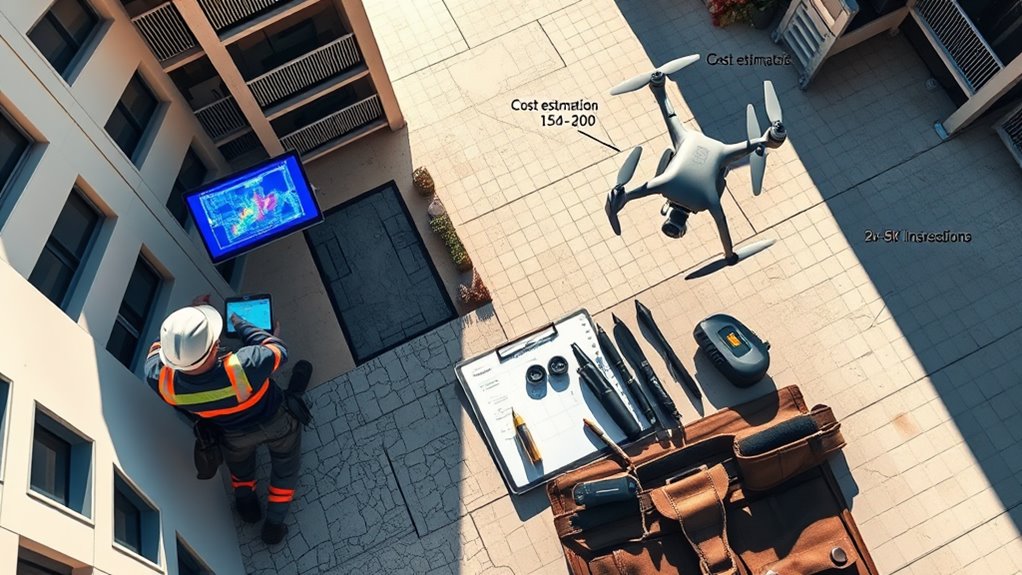
By integrating technology into property maintenance, you can greatly enhance efficiency and reduce costs. Property maintenance software automates preventative schedules, ensuring timely inspections and repairs, which can cut overall costs by up to 30%. Mobile apps enable tenants to report issues instantly, slashing response times by 50%. IoT devices, like sensors in your HVAC system, provide real-time monitoring, allowing proactive maintenance and reducing emergency repair costs by 20%. Cloud-based systems centralize maintenance records, helping property owners track trends and budget effectively, potentially saving 10% to 15% annually. Data analytics in software identifies recurring issues, enabling targeted interventions that improve property conditions and tenant satisfaction. Leveraging these tools not only streamlines operations but also minimizes unexpected expenses, ensuring your property remains well-maintained without straining resources. Embrace technology to transform your maintenance approach and maximize long-term savings.
Conclusion
You’ll tackle property maintenance challenges head-on, resolving tenant disputes with finesse and budgeting smartly for repairs. By keeping vacancies low and optimizing rental income, you’ll turn your investment into a cash-flow machine. Compliance costs and legal fees won’t trip you up when you stay proactive. With technology as your secret weapon, managing properties becomes a breeze. Like a well-oiled engine, your property strategy will run smoothly, ensuring long-term success and peace of mind.

